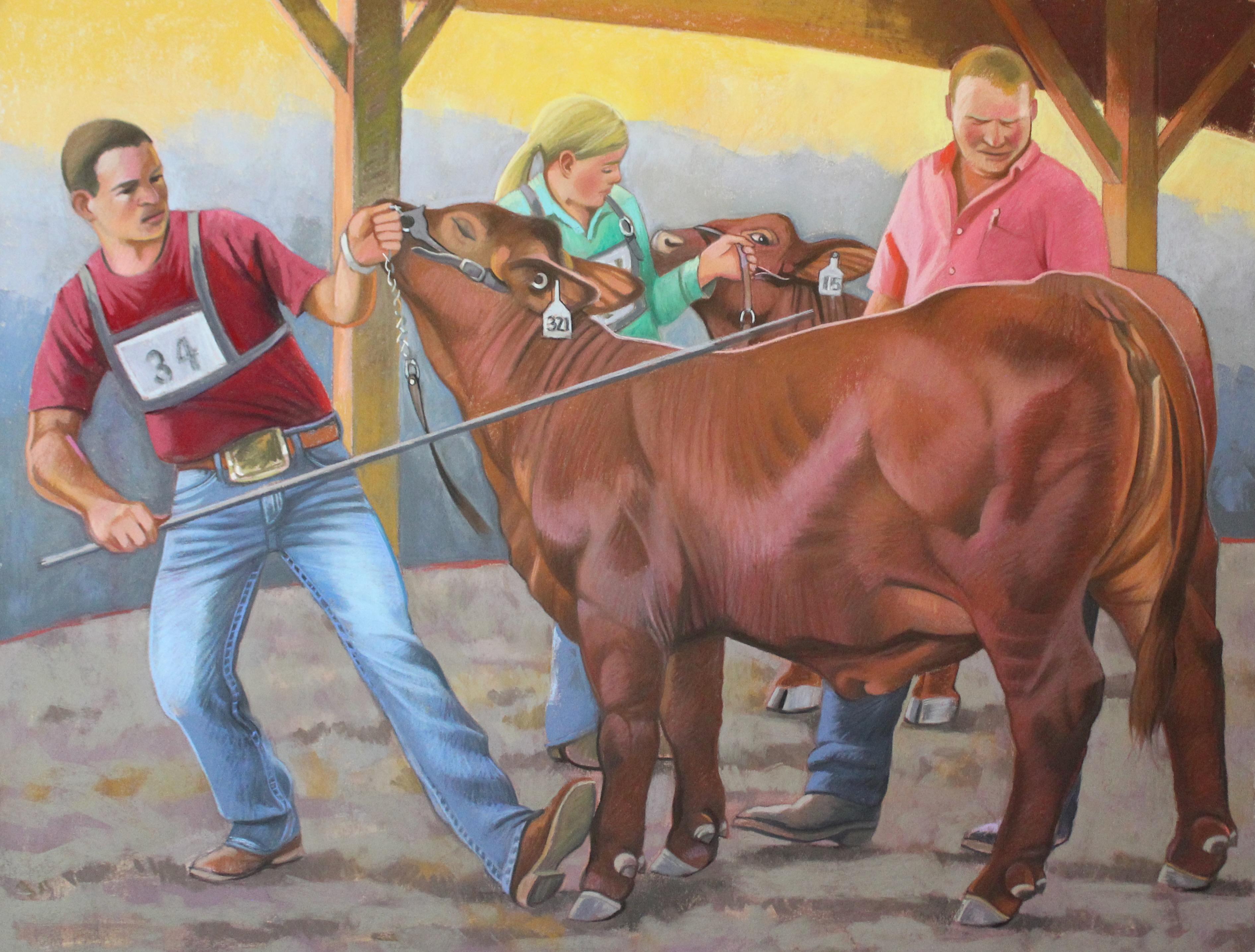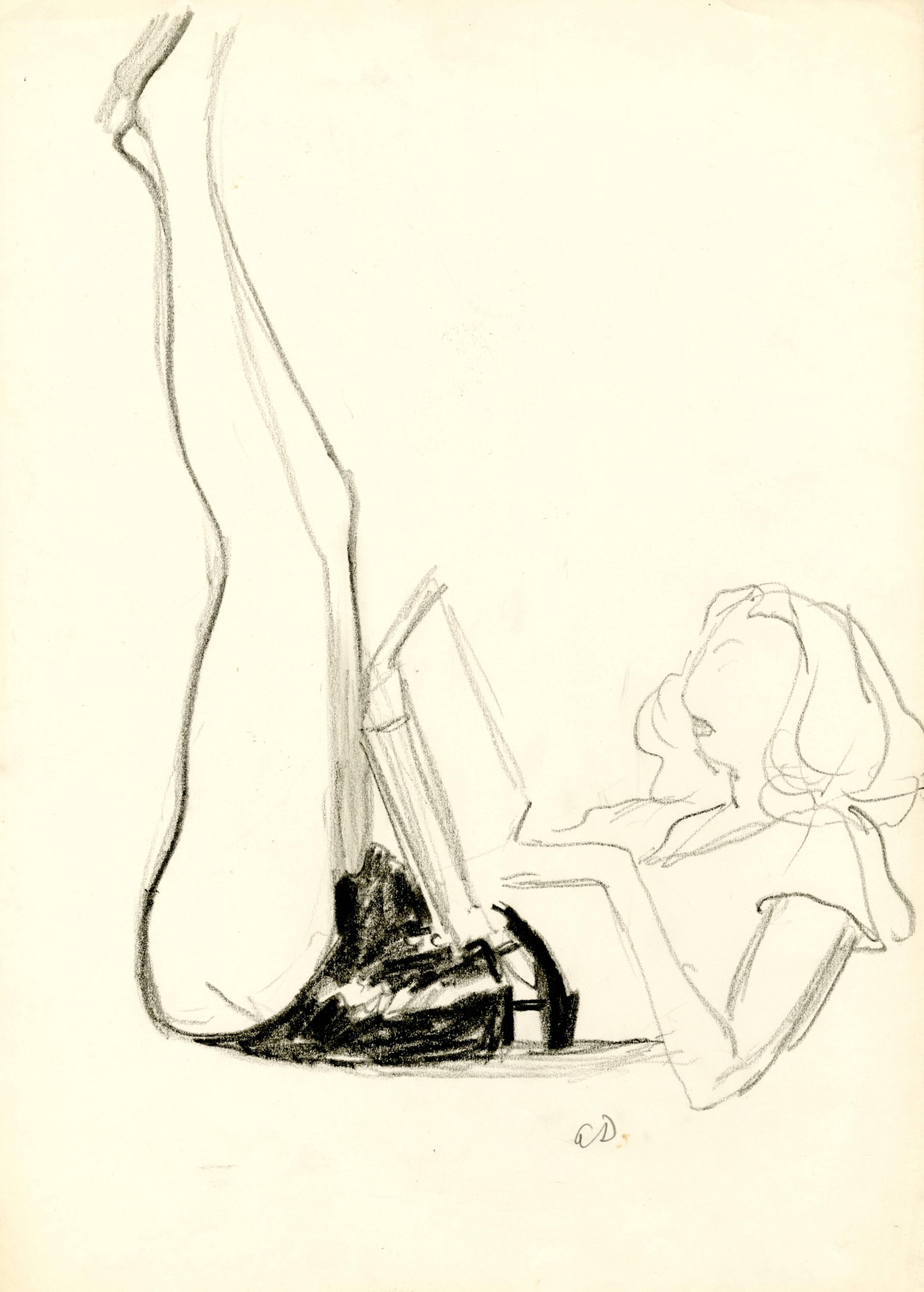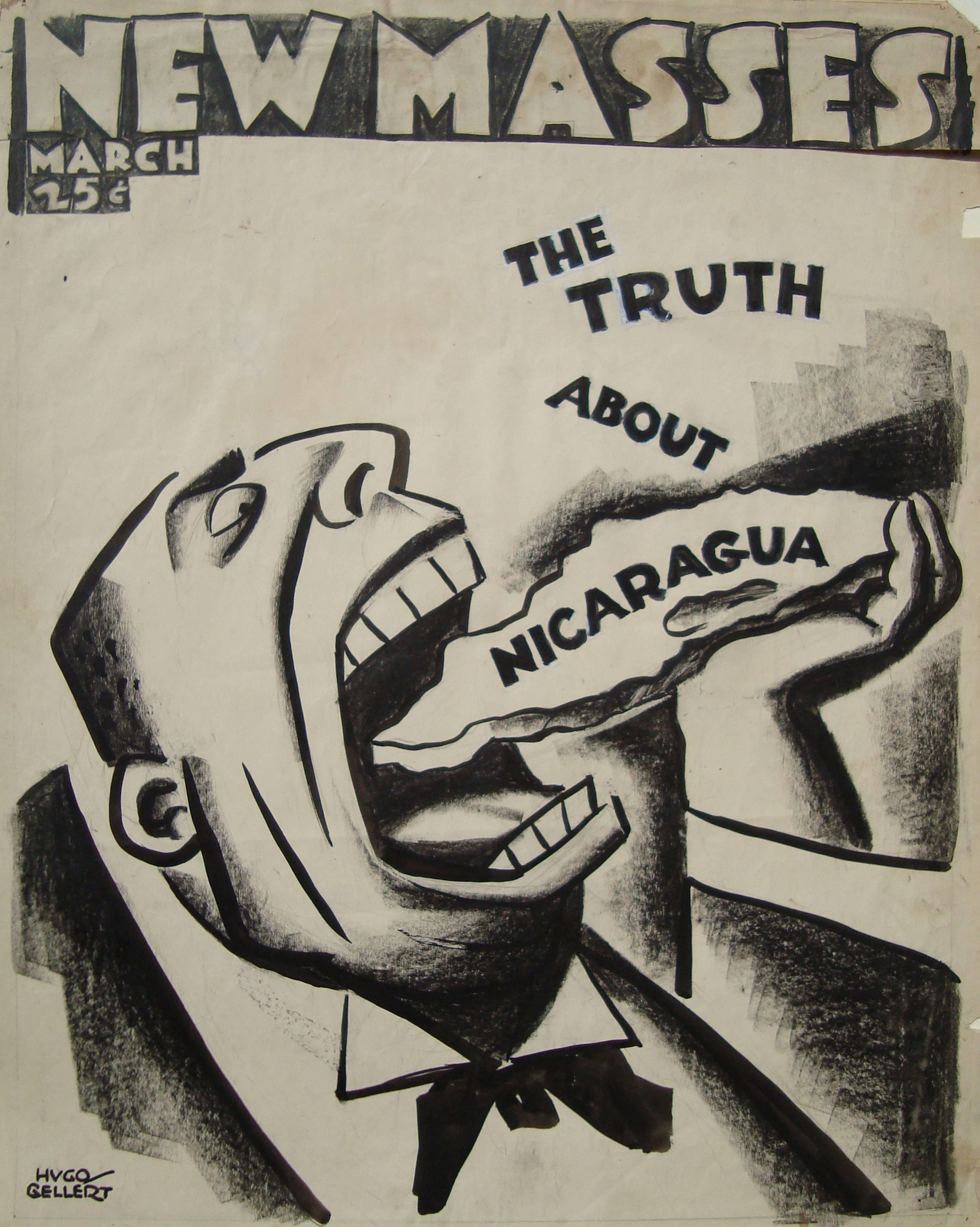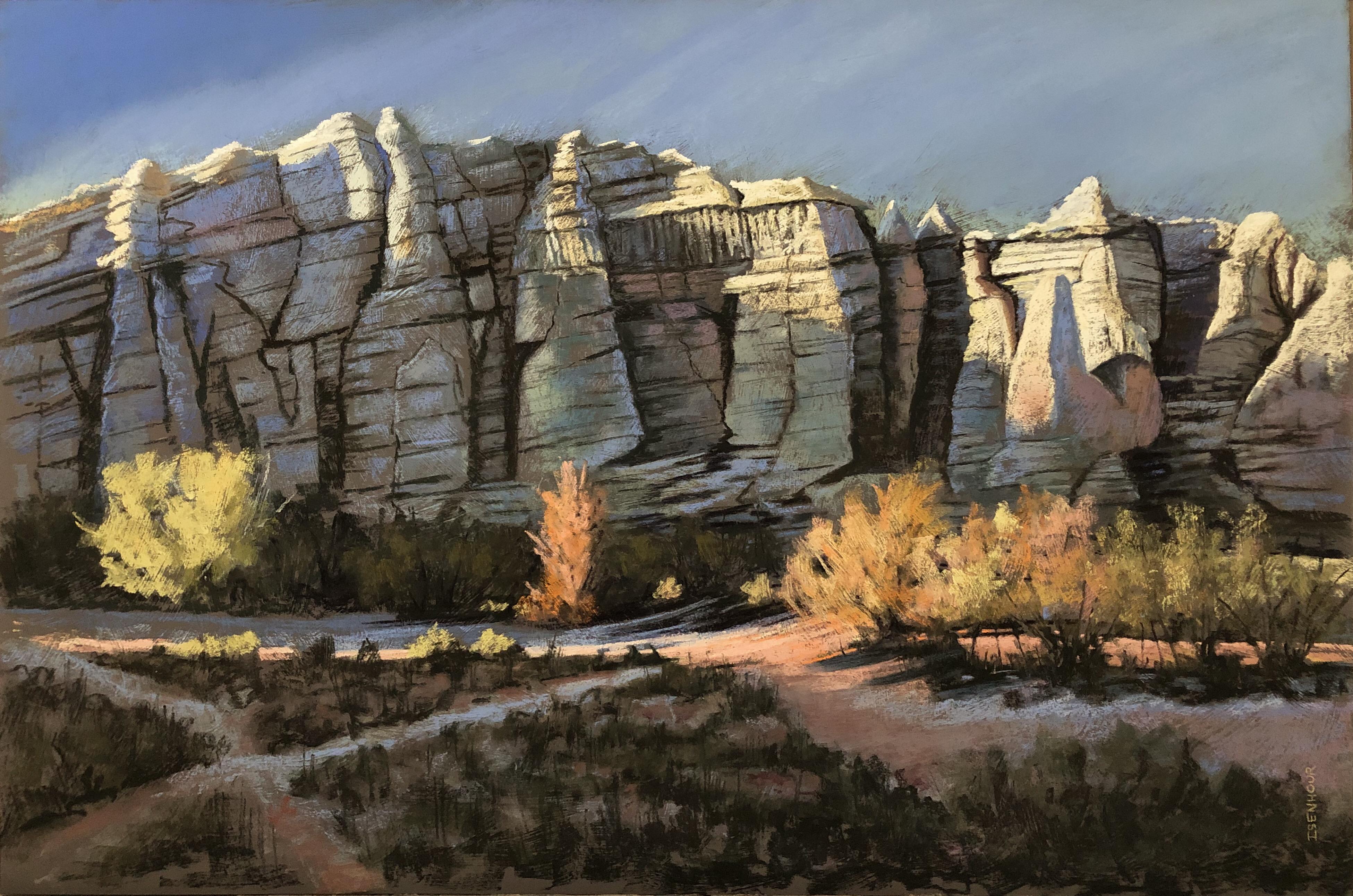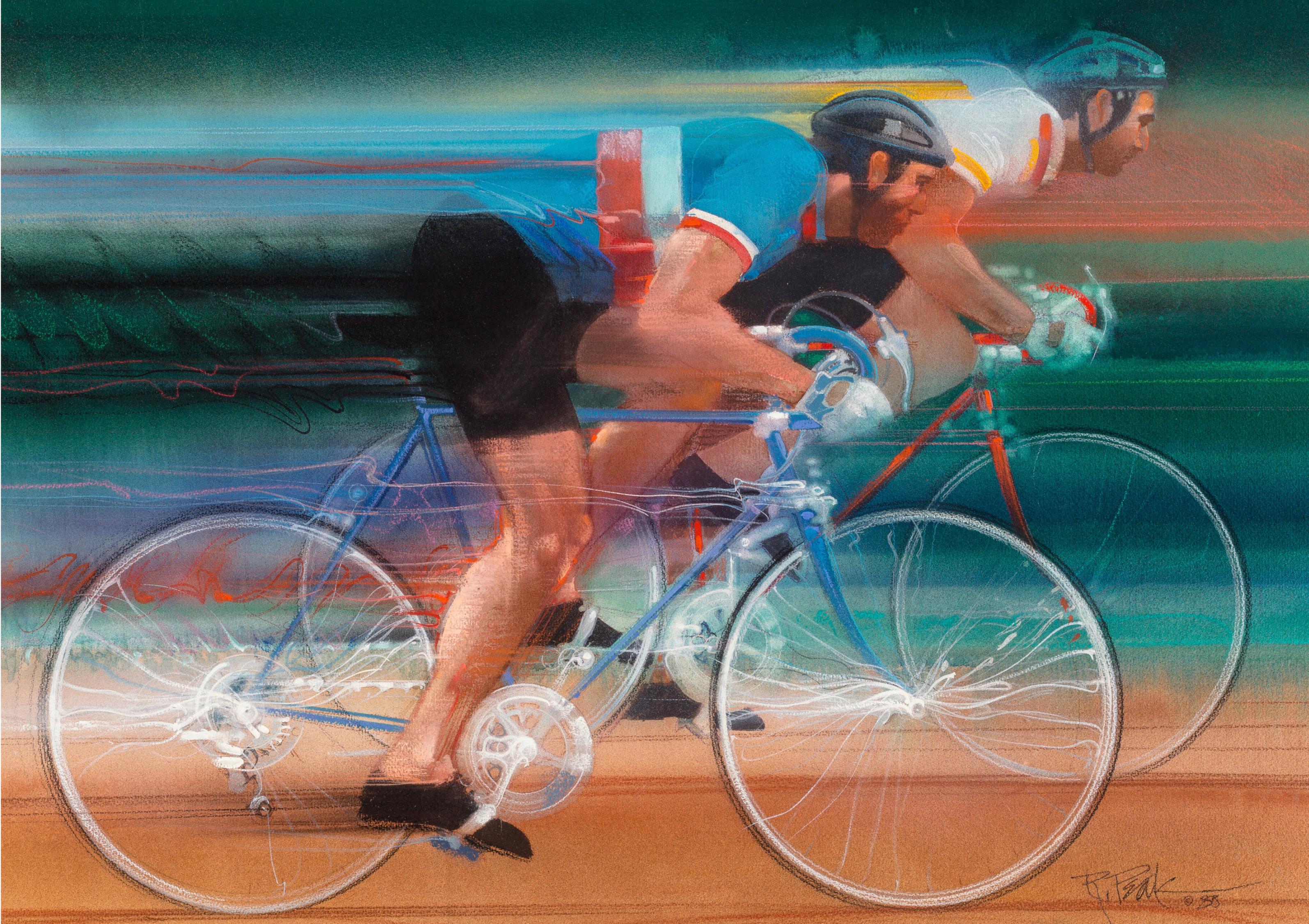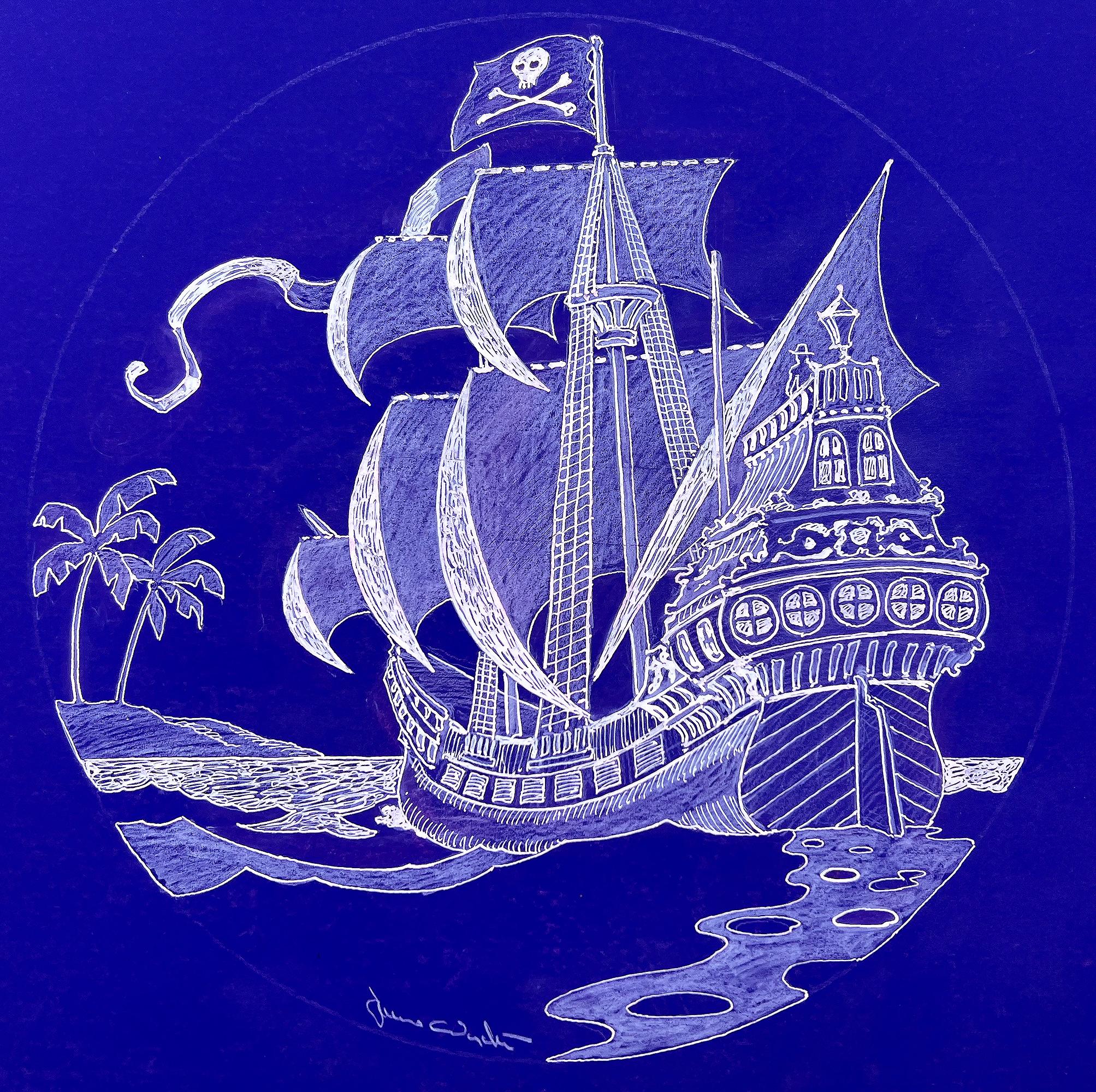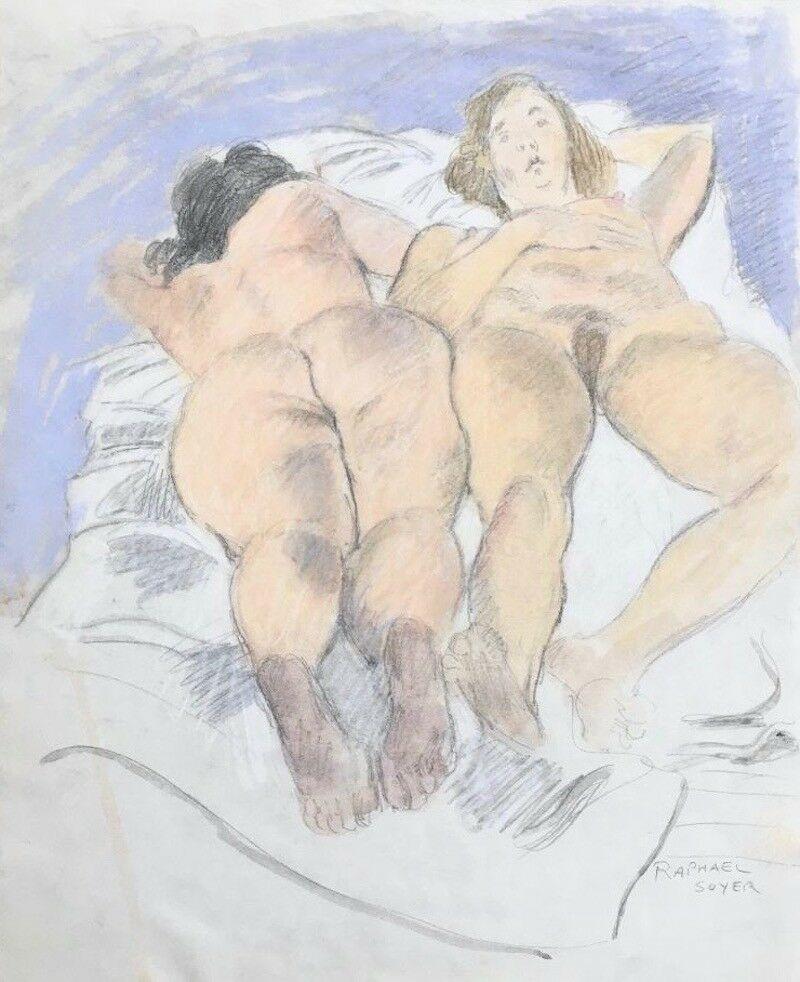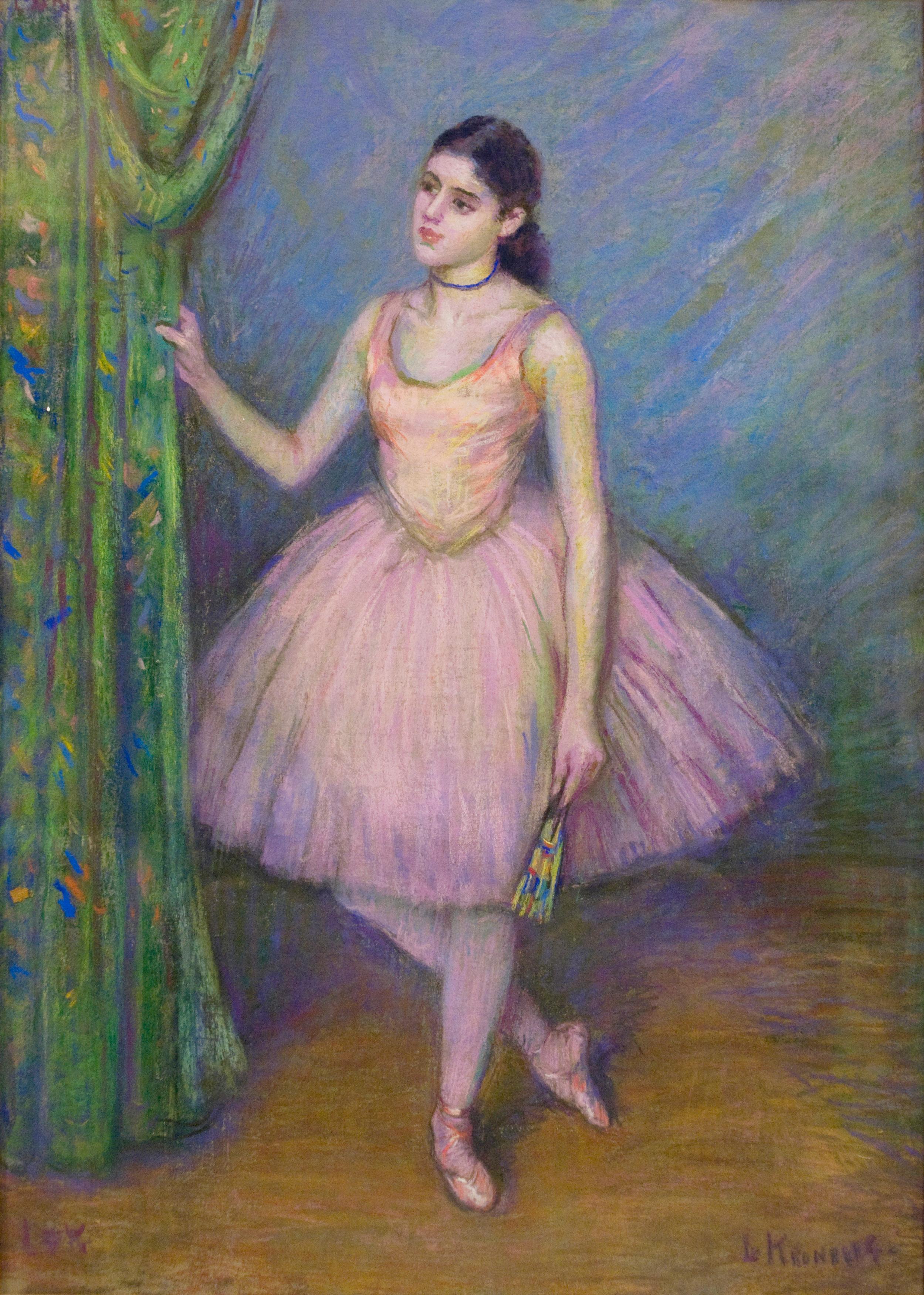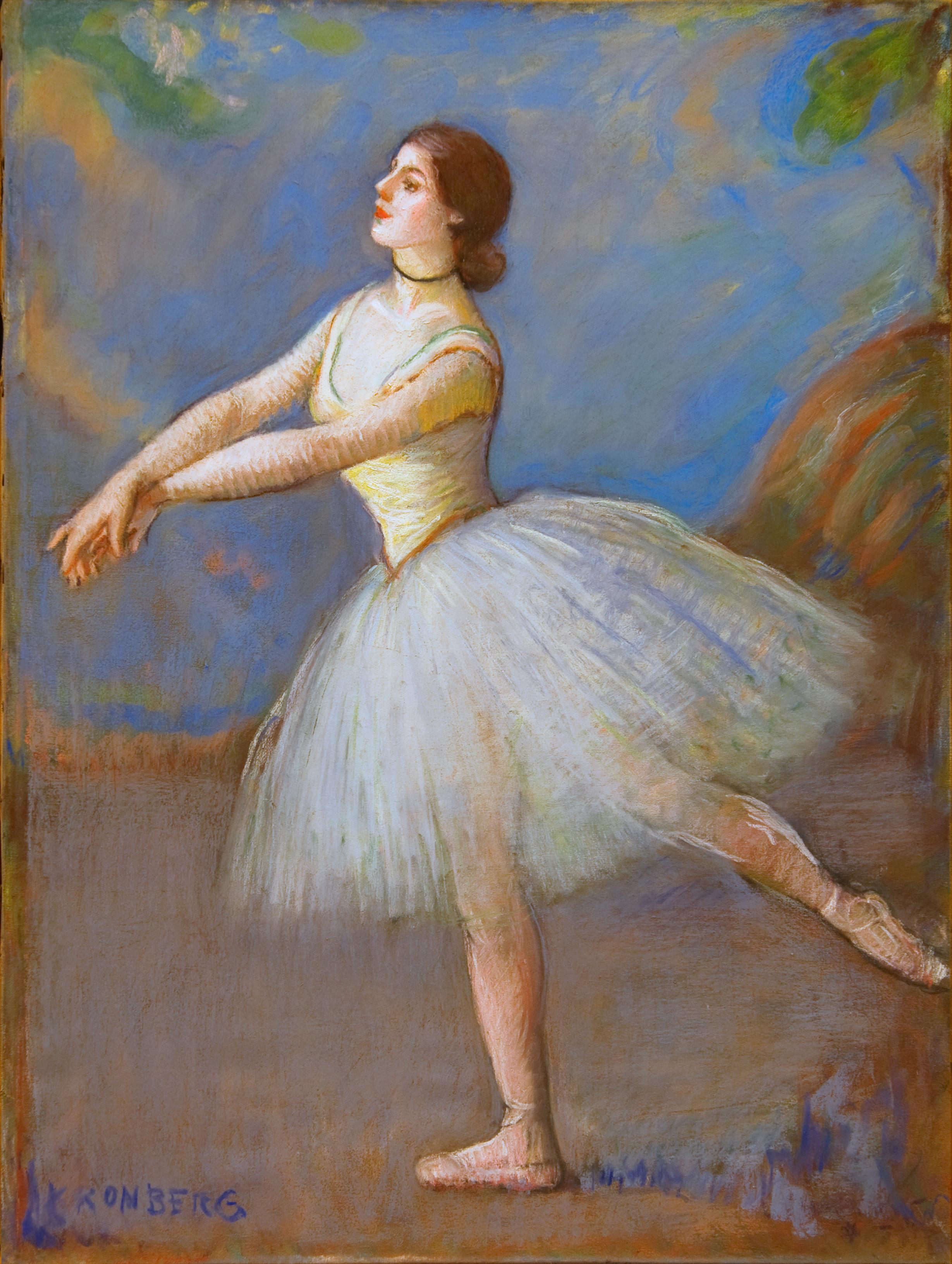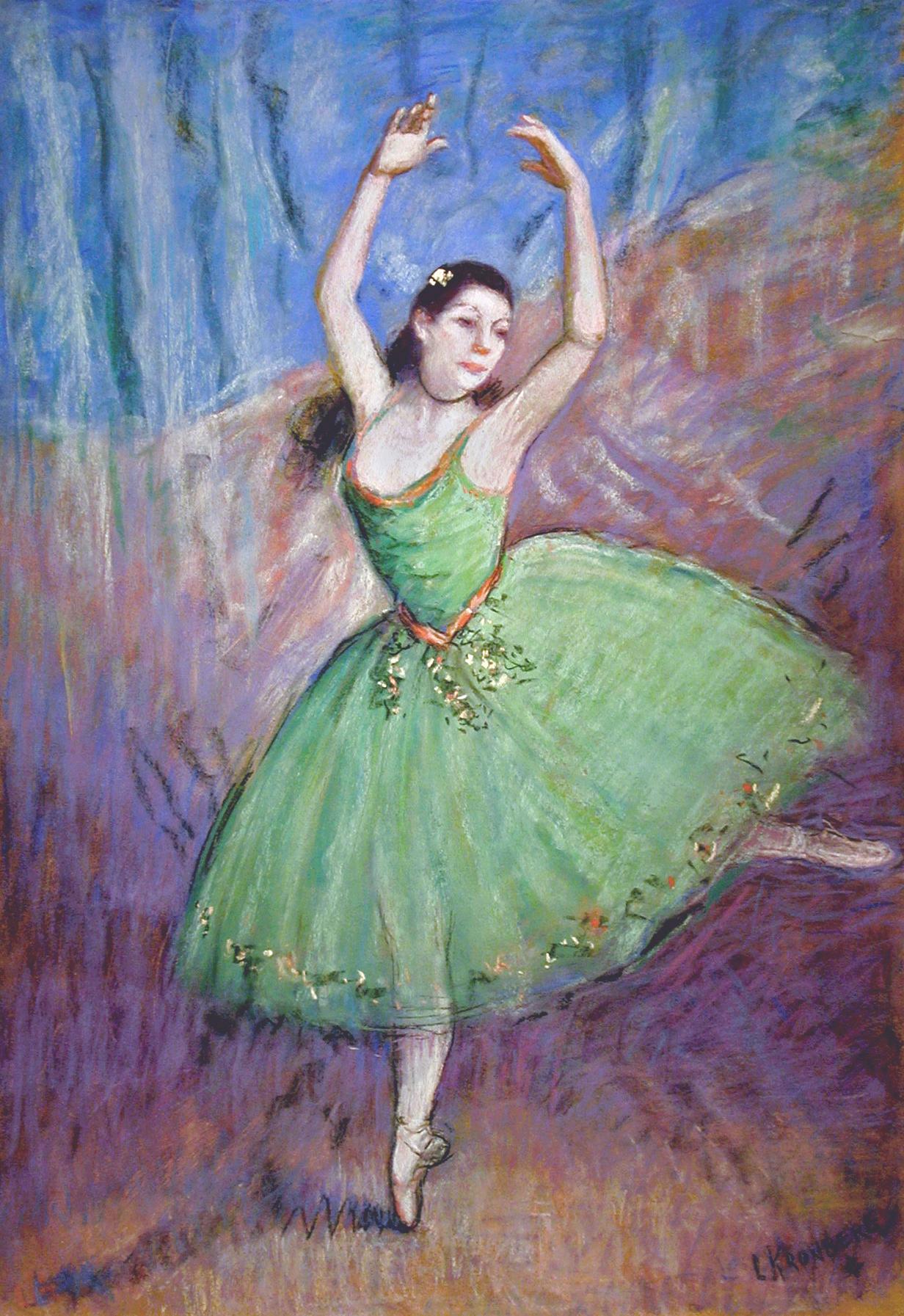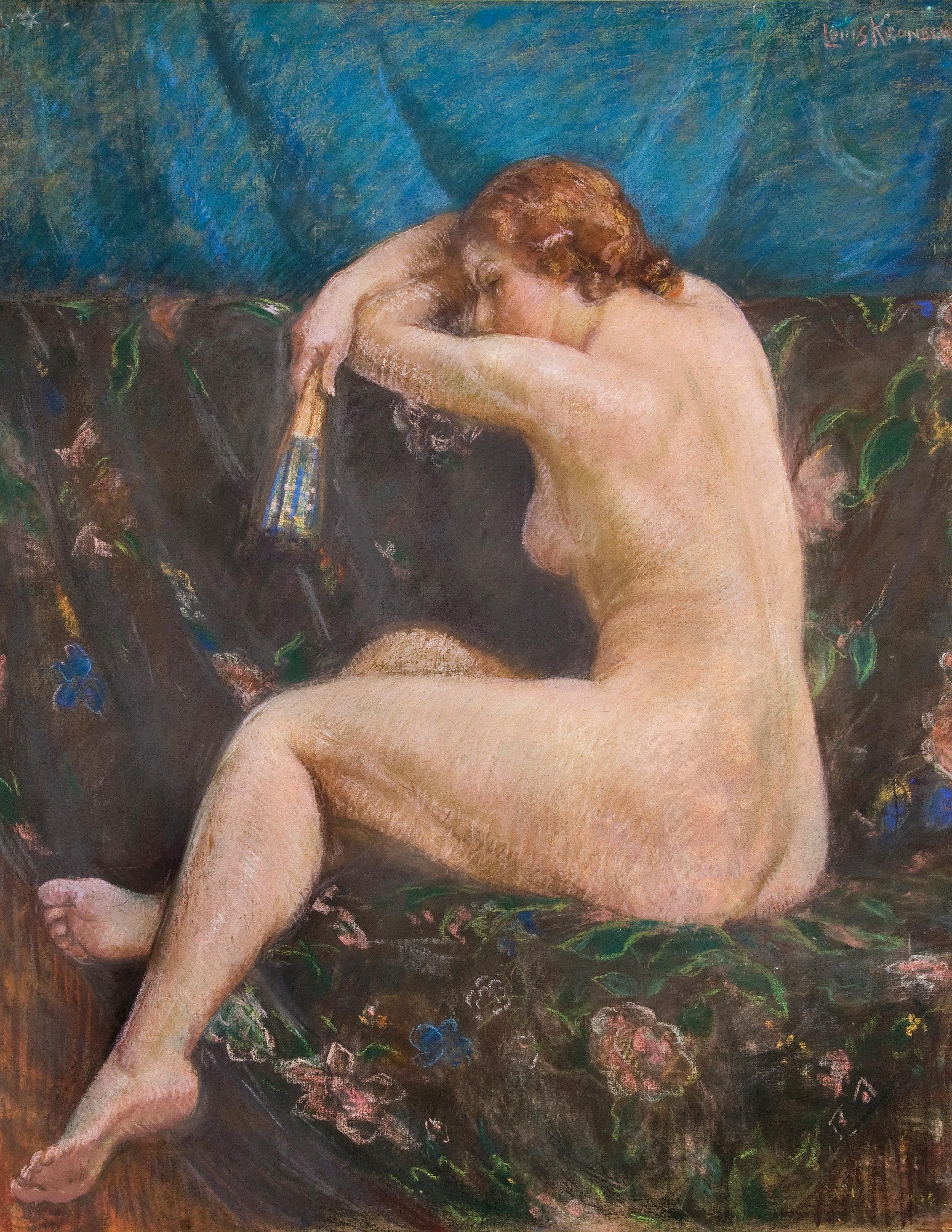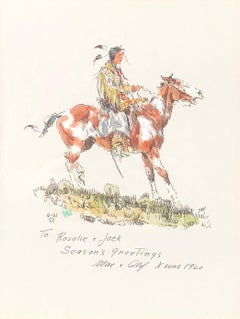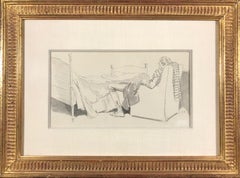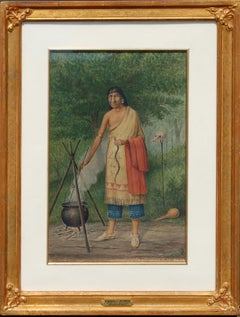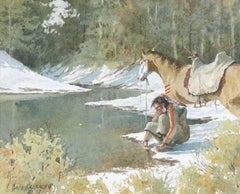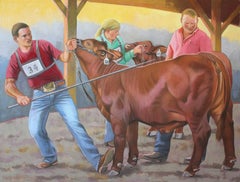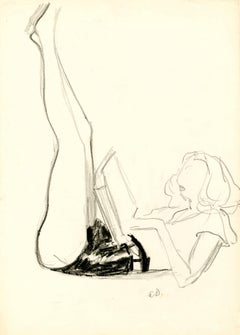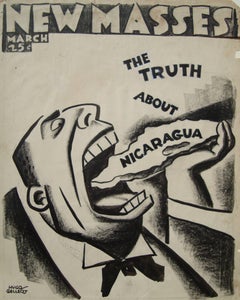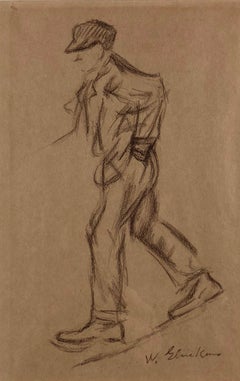
Man Walking
View Similar Items
Want more images or videos?
Request additional images or videos from the seller
1 of 6
William GlackensMan Walkingc. 1910
c. 1910
About the Item
- Creator:William Glackens (1870-1938, American)
- Creation Year:c. 1910
- Dimensions:Height: 18 in (45.72 cm)Width: 14 in (35.56 cm)Depth: 0.5 in (1.27 cm)
- Medium:
- Movement & Style:
- Period:
- Condition:
- Gallery Location:Missouri, MO
- Reference Number:1stDibs: LU74734420571
About the Seller
5.0
Vetted Professional Seller
Every seller passes strict standards for authenticity and reliability
Established in 1970
1stDibs seller since 2017
154 sales on 1stDibs
Typical response time: 14 hours
Authenticity Guarantee
In the unlikely event there’s an issue with an item’s authenticity, contact us within 1 year for a full refund. DetailsMoney-Back Guarantee
If your item is not as described, is damaged in transit, or does not arrive, contact us within 7 days for a full refund. Details24-Hour Cancellation
You have a 24-hour grace period in which to reconsider your purchase, with no questions asked.Vetted Professional Sellers
Our world-class sellers must adhere to strict standards for service and quality, maintaining the integrity of our listings.Price-Match Guarantee
If you find that a seller listed the same item for a lower price elsewhere, we’ll match it.Trusted Global Delivery
Our best-in-class carrier network provides specialized shipping options worldwide, including custom delivery.More From This Seller
View AllSeason's Greetings 1960 (Brave on Horseback)
By Olaf Wieghorst
Located in Missouri, MO
Olaf Wieghorst (American, 1899-1988)
"Season's Greetings" (Brave on Horseback) 1960
Watercolor/Gouache on Paper
Initialed and Monogramed and Dated
Dedicated: "To Rosalie & Jack, Season's Greetings, Mae & Olaf Xmas 1960"
Site Size: 12 x 9 inches
Framed Size: approx. 22.5 x 18.5 inches
Born in Viborg, Denmark, Olaf Wieghorst was a child acrobatic performer from the age of nine when he began appearances at Tivoli Theater in Copenhagen and later toured Europe. He also learned horseback riding working on a stock farm, and horses became a major focus of his admiration and later his painting.
In 1918, he arrived in the United States, having worked as a cabin boy on a steamer. He served in the 5th U.S. Cavalry on the Mexican border in the days of Pancho Villa...
Category
1960s American Realist Figurative Drawings and Watercolors
Materials
Paper, Watercolor, Gouache
Price Upon Request
Gentleman Napping in a Chair (Possibly for Ichabod Crane or other Illustration)
By Everett Shinn
Located in Missouri, MO
Everett Shinn
"Gentleman Napping in a Chair" (Illustration)
Pen and Ink on Paper
Initialed "E.S." Lower Right
Displaying an early aptitude for drawing, coupled with a strong interes...
Category
Early 20th Century American Realist Figurative Drawings and Watercolors
Materials
Paper, Ink, Pen
Medicine Man
By Cassilly Adams
Located in Missouri, MO
Cassilly Adams (American 1843-1921)
"Medicine Man" c. 1860s
Watercolor on Paper
Unsigned
Provenance: Questroyal Gallery, NYC
Site Size: approx. 14.5 x 8....
Category
Mid-19th Century American Realist Figurative Drawings and Watercolors
Materials
Paper, Watercolor
Price Upon Request
Winter's Blanket
By David Halbach
Located in Missouri, MO
David Halbach
"Winter's Blanket" 1992
Watercolor on Paper
Signed and Dated Lower Left
Image Size: 9 x 11 inches
Framed Size: 14.5 x 16.5 inches
A member of the Cowboy Artists of America since 1985, he has lived in Arizona beginning 1975 and later in the Sierras of California. In 1975, he also won the prestigious Silver Medal at the National Cowboy Hall of Fame show for his watercolor "Story Teller." In 1996 he completed a project for "National Geographic."
He attended the Chouinard Art Institute in Los Angeles, and his teachers were the acclaimed Millard Sheets and Rex Brandt...
Category
1990s American Realist Landscape Drawings and Watercolors
Materials
Watercolor
Price Upon Request
Golf Bags, Caddy with Golf Bag on His Back
By Frederick Conway
Located in Missouri, MO
Framed Size: approx 17 3/4 x 20 3/4 inches
Fred Conway (1900-1973)
"Golf Bags, Caddy with Golf Bag on His Back"
Pen/Ink/Watercolor on Paper
Site Size: approx. 10 x 13 inches
Framed Size: approx. 17 3/4 x 20 3/4 inches
A member of the faculty of the Washington University Art School from 1929 to 1970, Frederick Conway...
Category
1960s American Modern Figurative Drawings and Watercolors
Materials
Paper, Ink, Watercolor, Pen
Golfers
By Frederick Conway
Located in Missouri, MO
Golfers, 1928
Fred Conway (American, 1900-1973)
Signed and Dated Lower Right
18.5 x 24.5 inches
30.5 x 37 inches with frame
A member of the faculty of the Washington University Art ...
Category
1920s American Modern Figurative Drawings and Watercolors
Materials
Paper, Watercolor
Price Upon Request
You May Also Like
"Dragon, " Original Pastel Drawing
By Quang Ho
Located in Denver, CO
"Dragon," by Quang Ho, is a secondary market work with one previous owner. It is signed and dated (1988) on the lower left. The painting comes with it's original frame (measures 50 x...
Category
20th Century American Realist Animal Drawings and Watercolors
Materials
Paper, Pastel
Judging Hefers
Located in Columbia, MO
Nora Othic is considered one of the top regionalist painters in the Midwest. She builds on a legacy from her artistic predecessors such as Grant Wood, Thomas Hart Benton and the WPA ...
Category
21st Century and Contemporary American Realist Animal Drawings and Water...
Materials
Oil Pastel, Archival Paper
Eileen Lake
By Adolf Arthur Dehn
Located in Fairlawn, OH
Eileen Lake
Crayon on paper, early1930's
Initialed in pencil lower right (see photo)
Titled and annotated verso "Eileen Lake, early 1930s girlfriend"
Note: Eileen Hall Lake was an American poet and Adolf Dehn's girlfriend in the early 1930s.
Provenance:
Estate of the artist
By descent
Adolf Dehn, American Watercolorist and Printmaker, 1895-1968
Adolf Dehn was an artist who achieved extraordinary artistic heights, but in a very particular artistic sphere—not so much in oil painting as in watercolor and lithography. Long recognized as a master by serious print collectors, he is gradually gaining recognition as a notable and influential figure in the overall history of American art.
In the 19th century, with the invention of the rotary press, which made possible enormous print runs, and the development of the popular, mass-market magazines, newspaper and magazine illustration developed into an artistic realm of its own, often surprisingly divorced from the world of museums and art exhibitions, and today remains surprisingly overlooked by most art historians. Dehn in many regards was an outgrowth of this world, although in an unusual way, since as a young man he produced most of his illustrative work not for popular magazines, such as The Saturday Evening Post, but rather for radical journals, such as The Masses or The Liberator, or artistic “little magazines” such as The Dial. This background established the foundation of his outlook, and led later to his unique and distinctive contribution to American graphic art.
If there’s a distinctive quality to his work, it was his skill in introducing unusual tonal and textural effects into his work, particularly in printmaking but also in watercolor. Jackson Pollock seems to have been one of many notable artists who were influenced by his techniques.
Early Years, 1895-1922
For an artist largely remembered for scenes of Vienna and Paris, Adolf Dehn’s background was a surprising one. Born in Waterville, Minnesota, on November 22, 1895, Dehn was the descendent of farmers who had emigrated from Germany and homesteaded in the region, initially in a one-room log cabin with a dirt floor. Adolf’s father, Arthur Clark Dehn, was a hunter and trapper who took pride that he had no boss but himself, and who had little use for art. Indeed, during Adolf’s boyhood the walls of his bedroom and the space under his bed were filled with the pelts of mink, muskrats and skunks that his father had killed, skinned and stretched on drying boards. It was Adolf’s mother, Emilie Haas Dehn, a faithful member of the German Lutheran Evangelical Church, who encouraged his interest in art, which became apparent early in childhood. Both parents were ardent socialists, and supporters of Eugene Debs. In many ways Dehn’s later artistic achievement was clearly a reaction against the grinding rural poverty of his childhood.
After graduating from high school in 1914 at the age of 19—an age not unusual in farming communities at the time, where school attendance was often irregular—Dehn attended the Minneapolis School of Art from 1914 to 1917, whose character followed strongly reflected that of its director, Munich-trained Robert Kohler, an artistic conservative but a social radical. There Dehn joined a group of students who went on to nationally significant careers, including Wanda Gag (later author of best-selling children’s books); John Flanagan (a sculptor notable for his use of direct carving) Harry Gottlieb (a notable social realist and member of the Woodstock Art Colony), Elizabeth Olds (a printmaker and administrator for the WPA), Arnold Blanch (landscape, still-life and figure painter, and member of the Woodstock group), Lucille Lunquist, later Lucille Blanch (also a gifted painter and founder of the Woodstock art colony), and Johan Egilrud (who stayed in Minneapolis and became a journalist and poet).
Adolf became particularly close to Wanda Gag (1893-1946), with whom he established an intense but platonic relationship. Two years older than he, Gag was the daughter of a Bohemian artist and decorator, Anton Gag, who had died in 1908. After her husband died, Wanda’s mother, Lizzi Gag, became a helpless invalid, so Wanda was entrusted with the task of raising and financially supporting her six younger siblings. This endowed her with toughness and an independent streak, but nonetheless, when she met Dehn, Wanda was Victorian and conventional in her artistic taste and social values. Dehn was more socially radical, and introduced her to radical ideas about politics and free love, as well as to socialist publications such as The Masses and The Appeal to Reason.
Never very interested in oil painting, in Minneapolis Dehn focused on caricature and illustration--often of a humorous or politically radical character. In 1917 both Dehn and Wanda won scholarships to attend the Art Students League, and consequently, in the fall of that year both moved to New York. Dehn’s art education, however, ended in the summer of 1918, shortly after the United States entered World War I, when he was drafted to serve in the U. S. Army. Unwilling to fight, he applied for status as a conscientious objector, but was first imprisoned, then segregated in semi-imprisonment with other Pacifists, until the war ended. The abuse he suffered at this time may well explain his later withdrawal from taking political stands or making art of an overtly political nature. After his release from the army, Dehn returned to New York where he fell under the spell of the radical cartoonist Boardman Robinson and produced his first lithographs. He also finally consummated his sexual relationship with Wanda Gag.
The Years in Europe: 1922-1929
In September of 1921, however, he abruptly departed for Europe, arriving in Paris and then moving on to Vienna. There in the winter of 1922 he fell in love with a Russian dancer, Mura Zipperovitch, ending his seven-year relationship with Wanda Gag. He and Mura were married in 1926. It was also in Vienna that he produced his first notable artistic work.
Influenced by European artists such as Jules Pascin and Georg Grosz, Dehn began producing drawings of people in cafes, streets, and parks, which while mostly executed in his studio, were based on spontaneous life studies and have an expressive, sometimes almost childishly wandering quality of line. The mixture of sophistication and naiveté in these drawings was new to American audiences, as was the raciness of their subject matter, which often featured pleasure-seekers, prostitutes or scenes of sexual dalliance, presented with a strong element of caricature. Some of these drawings contain an element of social criticism, reminiscent of that found in the work of George Grosz, although Dehn’s work tended to focus on humorous commentary rather than savagely attacking his subjects or making a partisan political statement. Many Americans, including some who had originally been supporters of Dehn such as Boardman Robinson, were shocked by these European drawings, although George Grocz (who became a friend of the artist in this period) admired them, and recognized that Dehn could also bring a new vision to America subject matter. As he told Dehn: “You will do things in America which haven’t been done, which need to be done, which only you can do—as far at least as I know America.”
A key factor in Dehn’s artistic evolution at this time was his association with Scofield Thayer...
Category
1930s American Realist Figurative Drawings and Watercolors
Materials
Oil Crayon
Study for "The New Masses"
By Hugo Gellert
Located in Boston, MA
Hugo Gellert (Hungarian-American, 1892-1985), Study for "The New Masses". Mary Ryan Gallery 4. Signed in ink lower left: "Hugo / Gellert"; inscribed in crayo...
Category
20th Century American Realist Figurative Drawings and Watercolors
Materials
Ink, Wax Crayon
Listen
By Natasha Isenhour
Located in Denver, CO
Rock formations in landscape
Category
2010s American Realist Landscape Drawings and Watercolors
Materials
Pastel
$4,000
Cycling. Two men Sports Racing on Bicycles
By Bob Peak
Located in Miami, FL
This illustration was commissioned for the 1984 Olympic Games by the US postal service.
Signed and dated lower right
Work is framed
framed under acrylic to an overall size of 31.5 ...
Category
1980s American Realist Figurative Drawings and Watercolors
Materials
Pastel, Watercolor

